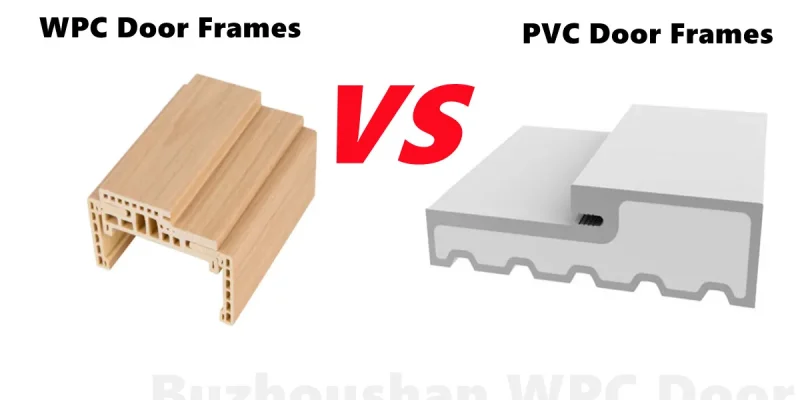PVC vs WPC: Decoding the Decking Conundrum with 10 Insider Tips

In the realm of decking materials, PVC and WPC stand out as two dominant contenders. Homeowners and builders often find themselves caught in the PVC vs WPC dilemma, trying to discern which decking option suits their needs best. Both materials come with their own set of advantages and drawbacks, making the decision-making process challenging. However, fear not! In this comprehensive guide, we will delve deep into the PVC vs WPC debate, offering 10 insider tips to help you make an informed choice for your decking project.
PVC vs WPC: Understanding the Basics
Before delving into the intricacies of PVC vs WPC decking, it’s essential to grasp the fundamental differences between the two materials. PVC, or polyvinyl chloride, is a synthetic plastic material known for its durability and low maintenance requirements. On the other hand, WPC, or wood-plastic composite, combines wood fibers with polymer resins to create a versatile decking option that mimics the appearance of wood while offering enhanced durability.
Durability Matters: Assessing Longevity
When it comes to decking, durability reigns supreme. PVC decking boasts exceptional resistance to moisture, rot, and insect damage, making it an ideal choice for humid climates or coastal areas. Conversely, WPC decking, while generally durable, may be susceptible to moisture absorption over time, potentially leading to warping or mold growth if not properly maintained.
Maintenance Made Easy: Comparing Upkeep
One of the primary appeals of PVC decking is its minimal maintenance requirements. Unlike wood, PVC does not require staining, sealing, or painting to maintain its appearance. A simple rinse with soap and water is usually sufficient to keep PVC decking looking pristine. WPC decking, while low-maintenance compared to traditional wood decking, may require periodic cleaning and sealing to preserve its aesthetic appeal and structural integrity.
Aesthetics and Authenticity: Evaluating Appearance
Both PVC and WPC decking offer a wide range of aesthetic options, allowing homeowners to achieve the look of natural wood without the maintenance hassles. PVC decking often features a uniform appearance with consistent color and grain patterns, ideal for modern or contemporary designs. In contrast, WPC decking captures the authentic look and feel of wood, complete with varying grain patterns and textures, appealing to those seeking a more rustic or traditional aesthetic.
Eco-Friendly Considerations: Examining Sustainability
As sustainability becomes an increasingly important consideration for consumers, the eco-friendliness of decking materials comes under scrutiny. While PVC decking is manufactured using synthetic materials, some manufacturers offer recycled content or eco-conscious production practices to mitigate environmental impact. WPC decking, incorporating wood fibers, presents a more sustainable alternative, utilizing renewable resources while reducing the demand for virgin timber.
Installation Insights: Weighing Ease of Installation
Efficiency and ease of installation are crucial factors to consider when comparing PVC vs WPC decking. PVC decking, renowned for its lightweight construction and uniform dimensions, is often easier to handle and install than its WPC counterpart. Additionally, PVC decking typically utilizes hidden fastening systems for a seamless finish, simplifying the installation process further. WPC decking, while still manageable for experienced DIYers or professionals, may require additional effort due to its heavier weight and variable dimensions.
Climate Compatibility: Adapting to Environmental Conditions
Climate considerations play a significant role in determining the suitability of PVC vs WPC decking for outdoor applications. PVC decking, with its inherent resistance to moisture and temperature fluctuations, excels in harsh climates, including hot summers and freezing winters. In contrast, WPC decking may be prone to expansion and contraction in extreme temperatures, necessitating proper installation techniques and climate-appropriate maintenance practices to ensure long-term performance.
Budgeting Wisely: Analyzing Cost Factors
Cost is often a determining factor for homeowners embarking on decking projects. While PVC decking typically commands a higher price point upfront, its minimal maintenance requirements and long-term durability can translate to cost savings over time. WPC decking, offering a more affordable initial investment, may require additional maintenance and replacement costs in the long run, depending on environmental conditions and usage patterns. Conducting a thorough cost-benefit analysis can help homeowners make an informed decision based on their budget and priorities.
Warranty Coverage: Understanding Protection Plans
Warranty coverage provides peace of mind for homeowners investing in decking materials, offering protection against manufacturing defects, fading, staining, and other potential issues. PVC decking often comes with extensive warranty coverage, reflecting the material’s durability and longevity. WPC decking warranties may vary depending on the manufacturer and product quality, emphasizing the importance of researching warranty terms and conditions before making a purchase decision.
Seeking Professional Advice: Consulting with Experts
Navigating the PVC vs WPC decking conundrum can be overwhelming, especially for first-time buyers. Seeking guidance from decking professionals, contractors, or experienced homeowners can provide invaluable insights and recommendations tailored to your specific needs and preferences. Don’t hesitate to reach out to experts in the field to gather additional information and ensure you make the best choice for your decking project.
Conclusion
In conclusion, the PVC vs WPC decking debate presents homeowners with a myriad of factors to consider when selecting the ideal material for their outdoor spaces. By understanding the differences in durability, maintenance requirements, aesthetics, sustainability, installation ease, climate compatibility, cost considerations, warranty coverage, and seeking professional advice, you can make a well-informed decision that aligns with your budget, lifestyle, and aesthetic preferences. Whether you opt for the low-maintenance appeal of PVC decking or the authentic charm of WPC decking, rest assured that both materials offer durable and aesthetically pleasing solutions for transforming your outdoor oasis.
FAQs
Q1. What does PVC vs WPC stand for in decking?
PVC stands for polyvinyl chloride, while WPC stands for wood-plastic composite. These materials are commonly used in decking to offer durability and aesthetic appeal without the maintenance requirements of traditional wood decking.
Q2. Is PVC decking better than WPC decking?
The superiority of PVC decking over WPC decking depends on various factors, including durability, maintenance requirements, aesthetics, climate compatibility, and budget considerations. Both materials have their own set of advantages and drawbacks, making it essential to evaluate your specific needs and preferences before making a decision.
Q3. Are PVC and WPC decking environmentally friendly?
While PVC decking is made from synthetic materials, some manufacturers offer recycled content or eco-conscious production practices to reduce environmental impact. WPC decking, incorporating wood fibers, presents a more sustainable alternative, utilizing renewable resources and reducing the demand for virgin timber.
Q4. How do I maintain PVC vs WPC decking?
PVC decking requires minimal maintenance and can be cleaned with soap and water. WPC decking may require periodic cleaning and sealing to preserve its appearance and structural integrity. Consult the manufacturer’s recommendations for specific maintenance guidelines for your decking material.
Q5. Can I install PVC vs WPC decking myself?
PVC decking is lightweight and often easier to handle and install than WPC decking. While both materials can be installed by experienced DIYers or professionals, PVC decking may require less effort due to its uniform dimensions and hidden fastening systems. Consider your skill level and comfort with DIY projects when deciding whether to install decking yourself or hire a professional.
Also read: JOINT PRODUCT EXAMPLE: 10 REAL-LIFE INSTANCES OF CO-PRODUCED GOODS











